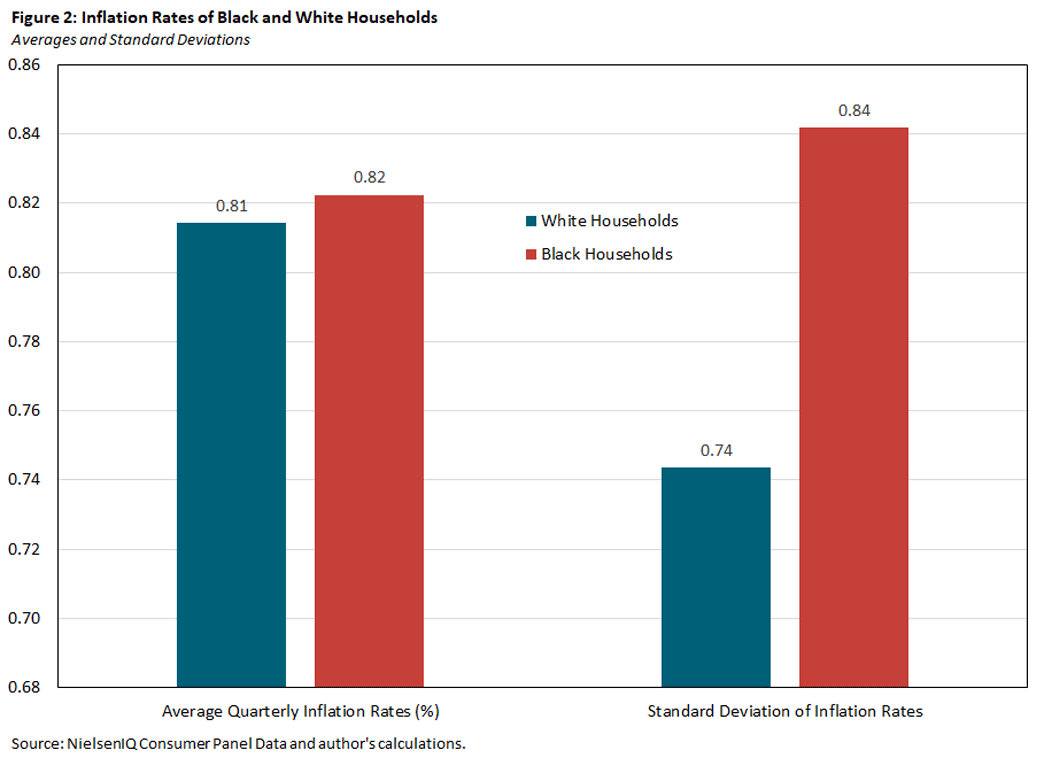
Black households in the U.S. faced higher and more volatile inflation compared to white households from 2004 to 2020, reveals new research from the University of California San Diego’s School of Global Policy and Strategy. The study, published today by the Federal Reserve Bank of Richmond, finds that Black families experienced slightly higher inflation and 13 percent more volatile inflation, which impacts prices on groceries and other household essentials.
Study author Munseob Lee, assistant professor of economics at the School of Global Policy and Strategy, says Black families spend a larger portion of their income on essential goods and services, like electricity and wireless phone services, compared to white households that spend more on luxury items, such as wine and pet care, which are less likely to fluctuate in price.
Lee’s research is the first to provide race-specific data on the impacts of inflation and suggests that income inequality in the U.S. is rising faster than current estimates.
“Black and low-income households are more likely to live in food deserts and have limited access to affordable and nutritious food,” Lee said. “As we saw recently, in those areas, retail products became more expensive and shelves in the retail stores became frequently empty because of increased shipping costs and supply chain disruption. This volatility makes it more difficult for households to predict and recalibrate consumption and savings.”
Lee’s study reveals that Black households tend to have fewer options when inflation increases. He found white households would shop at less expensive supermarkets and convenience stores; however, many Black households were already shopping at these markets.
He added that with gas prices rising, it becomes more difficult for these families to use transportation to find essential goods, so if a product is out of stock, it often means low-income shoppers can’t buy it at all.
The study utilized consumer data from Nielsen on spending in retail outlets. Survey responses from 60,000 U.S. households from 2004 to 2020 continually provided information about what products consumers buy and when and where they make purchases. Race is self-reported by households by one of four options: white, Black, Asian and other. Most households (82.2 percent) identified as white and 10 percent identified as Black.
Lee also leveraged previous research from his paper “Cost of Living Inequality During the Great Recession,” which showed that during the recession, high-income households used more coupons, but this was not the case for low-income shoppers.
“‘Coupon-cutting’ often requires time and Black or low-income households tend to have less leisure time because they have higher working hours and are less likely to afford childcare or assistance with household chores,” Lee said.
There are important policy implications to Lee’s findings. Firstly, government agencies should consider measuring inflation by race and income. There are no official statistics in the U.S. on inflation rates by any demographic, meaning that estimates of poverty and inequality under the assumption everyone experiences inflation in similar ways can be misleading.
Secondly, while the Federal Reserve fights against historically high overall inflation rates with monetary policy, fiscal policy can better serve households in need by providing targeted support on necessary goods and services with high inflation, such as past-due utility relief, free public transit and child care fee waivers.
“My research shows that income alone may be an incomplete measure to determine if households are eligible for government assistance, such as food stamps,” Lee said. “With inflation at its highest level in decades, the poorest communities are bearing the brunt of rising costs.”


Leave a Reply